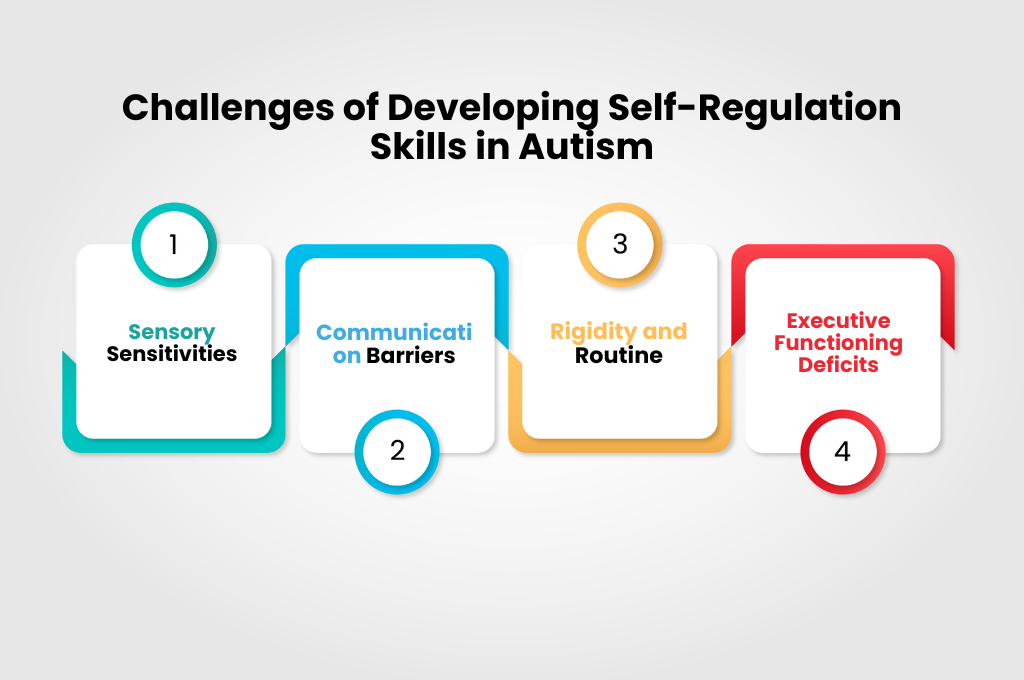Breaking Barriers: ABA Approach to Cultivating Self-Regulation in Autism
ABA TherapyJuly 17, 2025

Understanding ABA Therapy
ABA therapy, or Applied Behavior Analysis therapy, is a structured and evidence-based intervention that aims to improve social, communication, and learning skills for individuals with autism spectrum disorder (ASD). This therapy is widely recognized for its effectiveness in promoting positive behavioral changes and enhancing overall quality of life for individuals on the spectrum.
What is ABA Therapy?
ABA therapy involves breaking down complex skills into smaller, more manageable steps to help individuals with autism learn new behaviors and improve existing ones. By using techniques such as reinforcement and prompting, ABA therapists work closely with individuals to target specific goals and objectives tailored to their unique needs. The therapy is individualized, allowing for personalized strategies to be implemented based on the individual's strengths and challenges.
Benefits of ABA Therapy for Individuals with Autism
The benefits of ABA therapy for individuals with autism are vast and can have a profound impact on their development and daily functioning. Some key benefits include:
Benefits of ABA Therapy
Improved social skills
Enhanced communication abilities
Increased independence
Reduction in challenging behaviors
Improved academic performance
Better adaptability to new situations
ABA therapy equips individuals with the necessary skills to navigate everyday challenges and interactions, ultimately fostering greater independence and quality of life. By focusing on promoting self-regulation skills and targeting specific behavioral goals, ABA therapy plays a crucial role in supporting individuals with autism on their journey towards a more fulfilling and enriched life. For more insights on utilizing video modeling to enhance social skills in autism, check out our article on using video modeling to enhance social skills in autism.
Importance of Self-Regulation in Autism
For individuals with autism, self-regulation plays a crucial role in their daily lives. Understanding the significance and challenges associated with developing self-regulation skills is key in providing effective support and interventions.
Definition of Self-Regulation
Self-regulation refers to the ability to manage and control one's behaviors, emotions, and impulses in various situations. It encompasses skills such as self-control, impulse control, emotional regulation, and the ability to adapt to changing circumstances. In the context of autism, developing self-regulation skills is essential for navigating social interactions, communication, and daily activities independently.
Challenges of Developing Self-Regulation Skills in Autism

Individuals with autism often face unique challenges when it comes to developing self-regulation skills. Some common difficulties include:
- Sensory Sensitivities: Sensory processing differences in individuals with autism can impact their ability to regulate emotions and behaviors in response to sensory inputs, such as loud noises or bright lights.
- Communication Barriers: Challenges in verbal and nonverbal communication may hinder the expression of feelings or needs, leading to frustration and difficulty in self-regulation.
- Rigidity and Routine: A preference for sameness and strict adherence to routines can make it challenging for individuals with autism to adapt to unexpected changes or transitions, affecting their self-regulation abilities.
- Executive Functioning Deficits: Difficulties in planning, organizing, and problem-solving can impede the development of self-regulation skills, such as self-monitoring and self-directed behavior regulation.
Addressing these challenges and providing tailored support through evidence-based interventions, such as ABA therapy, can help individuals with autism build and enhance their self-regulation skills. By recognizing the importance of self-regulation and understanding the specific obstacles faced by individuals with autism, we can create a supportive environment that fosters growth, independence, and well-being.
ABA Approach to Cultivating Self-Regulation
When it comes to fostering self-regulation skills in individuals with autism, Applied Behavior Analysis (ABA) therapy offers a structured and effective approach. By employing evidence-based strategies tailored to the unique needs of each individual, ABA therapists can support the development of self-regulation skills. In this section, we will explore the strategies used in ABA therapy for promoting self-regulation and delve into compelling case studies and success stories.
Strategies Used in ABA Therapy for Promoting Self-Regulation
ABA therapy employs a variety of evidence-based strategies to promote self-regulation in individuals with autism. These strategies are tailored to the individual's specific needs and may include:
Strategy
Description
Visual Schedules
Using visual aids to help individuals understand and anticipate daily routines and transitions.
Token Economy Systems
Implementing a reward system to reinforce positive behaviors and self-regulation skills.
Social Stories
Creating narratives that explain social situations and appropriate responses to help individuals navigate social interactions.
Task Analysis
Breaking down complex tasks into smaller, manageable steps to facilitate learning and independence.
Self-Monitoring
Teaching individuals to track their own behaviors and emotions, promoting self-awareness and self-regulation.
By integrating these strategies into ABA therapy sessions, therapists can empower individuals with autism to effectively manage their emotions, behaviors, and responses in various contexts.
Case Studies and Success Stories
Case studies and success stories provide valuable insights into the impact of ABA therapy on promoting self-regulation skills in individuals with autism. These real-life examples showcase the positive outcomes that can be achieved through targeted interventions and support.
Case Study: Emily
Emily, a nine-year-old girl with autism, struggled with emotional regulation and transitions. Through ABA therapy focused on self-regulation techniques, Emily learned how to use a visual schedule to anticipate daily activities and transitions. Over time, Emily became more independent in managing her emotions and adjusting to new routines, leading to improved social interactions and overall well-being.
Success Story: Alex
Alex, a teenager with autism, faced challenges with impulse control and emotional outbursts. Through consistent ABA therapy sessions targeting self-monitoring and coping strategies, Alex learned to recognize his triggers and implement self-calming techniques. With the support of his ABA therapist, Alex gradually gained greater control over his emotions and behaviors, empowering him to navigate social situations with confidence and resilience.
These case studies and success stories exemplify the transformative impact of ABA therapy in cultivating self-regulation skills in individuals with autism. By incorporating tailored strategies and individualized support, ABA therapists play a vital role in empowering individuals to enhance their self-regulation abilities and thrive in various aspects of life.
Tips for Supporting Self-Regulation at Home
Enhancing self-regulation skills in children with autism is a vital aspect of their development. Implementing ABA techniques in daily routines and creating a supportive environment are key strategies in promoting self-regulation at home.
Implementing ABA Techniques in Daily Routines
One effective way to support self-regulation in children with autism is to integrate ABA techniques into their daily routines. Consistency and structure are crucial in ABA therapy, and this can be achieved by establishing clear schedules and using visual supports such as visual schedules or timers to help children anticipate transitions and activities.
ABA Technique
Description
Visual Schedules
Visual schedules provide a visual representation of activities, helping children understand what will happen next.
Task Analysis
Breaking down tasks into smaller steps can make them more manageable for children with autism.
Reinforcement Systems
Implementing reinforcement strategies, such as token economies or rewards, can motivate children to engage in desired behaviors.
By implementing these ABA techniques consistently, parents can create a structured environment that promotes self-regulation and facilitates learning.
Creating a Supportive Environment for Self-Regulation
In addition to incorporating ABA techniques, creating a supportive environment at home is essential for fostering self-regulation in children with autism. This involves providing sensory-friendly spaces, minimizing distractions, and creating opportunities for relaxation and self-calming.
Ensuring that the home environment is tailored to the child's sensory needs can help reduce triggers that may lead to sensory overload or dysregulation. This can include establishing quiet areas, regulating lighting and noise levels, and offering sensory tools like fidget toys or weighted blankets.
Furthermore, promoting emotional regulation through techniques such as deep breathing exercises, mindfulness activities, or social stories can empower children to self-regulate their emotions and responses in various situations.
By combining ABA techniques with a supportive home environment that caters to the unique needs of children with autism, parents can play a crucial role in helping their child develop essential self-regulation skills. For more information on developing a comprehensive home-based ABA program, check out our article on how to develop a home-based ABA program.
